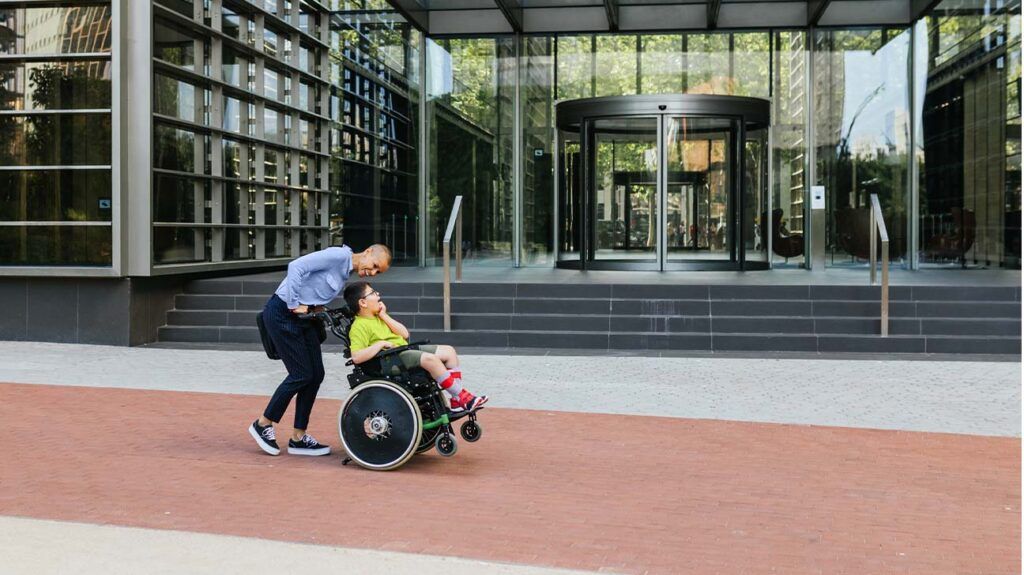A person may inherit the genetic changes responsible for muscular dystrophy. These genetic changes can also occur due to spontaneous genetic mutations. In either case, the disease is not preventable.
Muscular dystrophies (MDs) are a group of genetic conditions that cause progressive muscle weakness and atrophy. Although it is not possible to prevent MD, treatments can help to slow progression.
This article explains why it is not possible to prevent MD, the treatment options, prognosis, and when to speak with a doctor.

There are more than
The genetic changes that cause MD can occur as a spontaneous mutation, or people may inherit the necessary gene from a parent.
A person can inherit MD in
- Autosomal dominant inheritance: This occurs when a child receives a “normal” gene from one parent and a defective gene from the other parent.
- Autosomal recessive inheritance: This involves a faulty gene from each parent.
- X-linked, or sex-linked, recessive inheritance: This type occurs when a male child receives a faulty gene from the female parent.
MD is not contagious and cannot occur due to injury or activity, so people cannot prevent it.
Learn more about autosomal inheritance.
According to the National Health Service (NHS) in the United Kingdom, there is no cure for MD, but treatments can help slow disease progression.
Treatment will depend partly on the type of MD a person has. Below are some potential treatment options.
Corticosteroid medications
Corticosteroid therapy is the
Corticosteroids have immunosuppressive and anti-inflammatory effects that help to slow the progression of muscle weakness and delay disease complications.
Deflazacort is one corticosteroid that doctors may prescribe for children with DMD ages 5 years and over. According to
However, research associates long-term use of corticosteroids with certain adverse side effects, such as:
- reduced growth
- bone fractures
- weight gain
- mood disturbances
In 2023, the
This drug appears to have the same efficacy as other types of corticosteroids but with fewer side effects.
Research is currently underway to investigate the efficacy of vamorolone in treating another form of MD called Becker muscular dystrophy (BMD).
Ataluren
Ataluren (Translarna) is a medication that doctors
These nonsense mutations affect the dystrophin gene, which makes the protein dystrophin. This protein is involved in muscle structure and function.
Nonsense mutations in the dystrophin gene stop the production of a normal dystrophin protein and replace it with a non-functional version.
Ataluren
A
Medical treatments may help to delay or prevent certain MD complications. The
Physical therapy
Physical therapy starting in the earliest stages of MD can help to maintain muscle strength and flexibility and prevent joint stiffness. This may help to delay the onset of mobility complications.
Respiratory therapy
MD can affect the diaphragm muscles necessary for breathing.
Respiratory therapy starting soon after diagnosis can help to prevent or delay respiratory problems, though some people with MD may eventually require a ventilator to help them breathe.
Speech therapy
MD can cause weakness in the facial and throat muscles, which may cause problems with speech.
Speech therapy exercises can help maximize the strength of these muscles and address issues with verbal communication or swallowing difficulties.
Regular heart monitoring
Some types of MD can affect the heart muscle. The NHS advises that people with DMD and BMD undergo regular heart monitoring to help detect and treat early heart issues before they progress.
Monitoring may include regular electrocardiograms to assess heart function and occasional echocardiograms to check the heart’s structure.
People with MD who develop heart issues may require the following treatments to delay or prevent further heart complications:
- ACE inhibitors: Ace inhibitors help to relax the arteries and help the heart pump blood around the body.
- Beta-blockers: Beta-blockers help to manage irregular heartbeats.
- A pacemaker: A pacemaker is a small, battery-operated implanted device that helps to regulate the heartbeat.
A person’s outlook may depend on the type of MD they have. People should speak with a healthcare professional to learn the typical prognosis for that type.
Duchenne MD
According to the
DMD progresses rapidly, with many children being unable to walk by
Proper medical management and support can improve the quality of life for people with Duchenne MD.
Myotonic MD
Myotonic MD is the
DM1 has a classic form and a mild form. Classic DM1 typically presents during a person’s
Type DM2 typically presents during adulthood and is less severe than classic DM1.
The NHS advises that people speak with a doctor if they or their child develop symptoms of muscle weakness or impaired mobility. If necessary, the doctor will refer them for further tests.
In adults, potential signs of MD to look out for include:
- difficulty climbing stairs
- difficulty lifting objects
- inability to play sports they previously played
The above signs do not necessarily indicate MD; a wide range of conditions can cause these issues. A doctor will be able to determine the cause.
Children with MD may have difficulty walking or climbing stairs and fall more frequently than other children.
They may also have difficulty standing from a sitting position and use Gower’s technique to help them stand.
This involves facing the floor, placing the feet wide apart, and lifting with the buttocks first. The child then “walks” their hands up their legs, placing them on the knees and then the thighs.
Muscular dystrophies (MDs) are a group of genetic diseases that cause progressive muscle weakness and atrophy. The genetic mutations that cause MDs can be inherited or develop spontaneously.
MDs do not occur due to external factors, such as infection, activity levels, or injury, so they are not preventable. However, treatment can slow the progression of the disease and help prevent complications.
People should see a doctor if they or their child develop signs or symptoms of MD. Symptoms may include falling over, difficulty walking, and difficulty lifting things.
